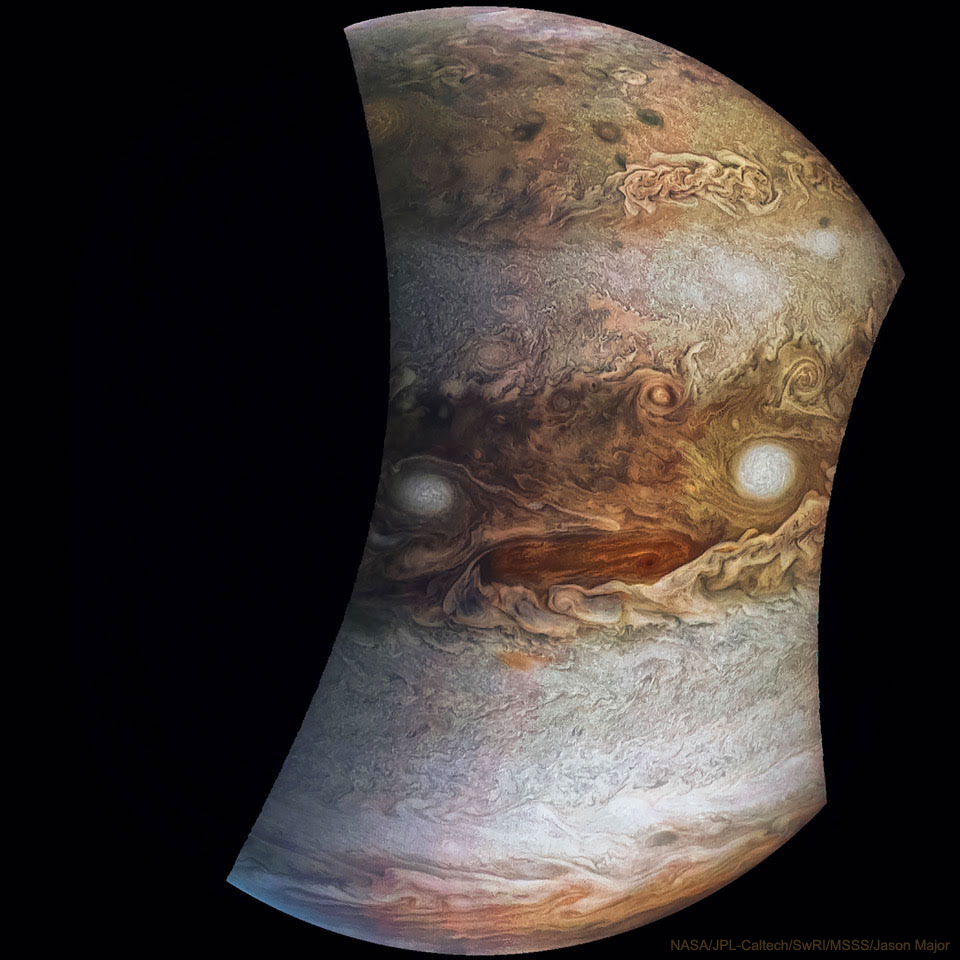朱诺号拍摄的木星云层中的一张脸
(原标题: A Face in the Clouds of Jupiter from Juno)
2021-06-08
浏览次数: 160
你在木星的云层里看到了什么?在最大的尺度上,木星绕着行星旋转,有交替的光带和红棕色带。上升区的气体,主要是氢和氦,通常在高压区域周围旋转。相反,落带气体通常在低压区域旋转,就像地球上的气旋和飓风一样。带状风暴可以形成大而持久的白色椭圆形和细长的红色斑点。2017年,美国国家航空航天局的朱诺号探测器在近木星6号期间捕捉到了这些云的大部分特征,这是它第六次在环绕木星的两个月的轨道上飞过这颗巨大的行星。但吸引你注意的肯定不是这些云本身,而是它们的排列方式。这张引人注目的脸,绰号“乔维·麦克朱比特脸”,在邻近的风暴云旋转离开之前,它持续了大约几个星期。朱诺号目前已经绕木星运行了33圈,昨天刚刚近距离掠过太阳系最大的卫星——木卫三。
查看原文解释
What do you see in the clouds of Jupiter? On the largest scale, circling the planet, Jupiter has alternating light zones and reddish-brown belts. Rising zone gas, mostly hydrogen and helium, usually swirls around regions of high pressure. Conversely, falling belt gas usually whirls around regions of low pressure, like cyclones and hurricanes on Earth. Belt storms can form into large and long-lasting white ovals and elongated red spots. NASA's robotic Juno spacecraft captured most of these cloud features in 2017 during perijove 6, its sixth pass over the giant planet in its looping 2-month orbit. But it is surely not these clouds themselves that draws your attention to the displayed image, but rather their arrangement. The face that stands out, nicknamed Jovey McJupiterFace, lasted perhaps a few weeks before the neighboring storm clouds rotated away. Juno has now completed 33 orbits around Jupiter and just yesterday made a close pass near Ganymede, our Solar System's largest moon.
